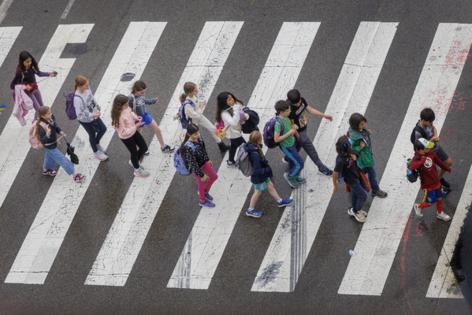American kids' health is in decline, and they're dying at disproportionate rates, sweeping new study says
Published in News & Features
PHILADELPHIA — American children today are dying at much higher rates than kids in similar countries. They’re also far more likely to suffer from a chronic disease than children in previous generations were.
That’s according to a new study from researchers at the Children’s Hospital of Philadelphia, who dug through nearly two decades’ worth of data from health systems and government sources in one of the most comprehensive studies of children’s health. The researchers found that the health of American children has been in sharp decline since 2007.
This is despite the U.S. spending nearly twice as much on health care as other developed countries, and being a world leader in biomedical advances like CRISPR gene therapy, which in May saw the successful treatment of a baby with a rare metabolic disorder.
Much of this decline started decades earlier than the study’s analysis time frame. Since the early 1970s, our childhood mortality rates have been falling behind other high-income nations.
Between 2007 and 2022, infants in the U.S. were 78% more likely to die than infants in other high-income countries, the researchers found. Preterm birth and sudden unexpected infant death were the biggest drivers of that disparity.
Children aged 1 to 19 were 80% more likely to die. Firearm-related injuries were the leading cause of death, followed by motor vehicle crashes. Children in the U.S. faced a 15 times higher chance of dying by a firearm than children in similar countries.
American kids were also up to 20% more likely to have a chronic condition in 2023 than they were in 2011. Rates of depression, sleep apnea, eating disorders, anxiety, autism, and obesity increased the most.
To understand what’s happening to America’s youth, The Inquirer spoke with Christopher Forrest, the study’s lead author and a pediatrician at CHOP. The following conversation has been edited for length and clarity.
How significant is the rise in chronic conditions in U.S. children, and what are the most common conditions?
Almost 30 years ago, it was really uncommon for us in the primary care practices to see a kid with a chronic condition. Now, almost one in two kids in the primary care practices has a chronic condition. There’s been a rise in just about every type of condition.
What’s been rising most rapidly recently is really the mental disorders: primarily anxiety, and its associated symptoms like loneliness and stress.
What’s driving this rise?
One of the big concerns I have about childhood is just the atomization of our neighborhoods and the retreat of kids in homes.
In some of the houses in my neighborhood, I don’t know that there’s a kid in that house until I see a sign outside that says, ‘Congratulations Class of 2025.’ We don’t have neighborhoods where families feel that there’s enough safety that they can let their kids play outdoors unsupervised, and that’s actually harming kids.
They’re not playing with each other, they’re not creating games. And these are skills that in the 21st century, digital age are going to be critically important — the ability to innovate, to create, to relate to one another, to manage your emotions.
When you’re not playing and you’re not meeting what has been evolutionarily programmed in the human species, what happens? You become anxious, you have learning disabilities, and these rates go up. That’s probably driving some of the developmental and mental health disorders.
How has the Trump administration’s policy changes impacted children’s health in the U. S.?
I am very concerned about cuts to the Medicaid program, because the kids who get Medicaid get that because they’re vulnerable to illness or they have a bad chronic condition.
Take away their Medicaid coverage, it’s only going to get worse. Cuts to food stamps and Supplemental Nutrition Assistance Program are going to lead to problems with kids being hungry, and a lack of resources for families is going to further strain families.
If you already have a crisis in children’s health, the thing you should not do is take away their healthcare and take away their social supports.
What can we do to reverse the declining health of U.S. children?
A national campaign is definitely called for here. We know policies like publicly sponsored parental leave, high-quality childcare, reducing access to firearms, ensuring that kids who are sick get Medicaid, and so on will help kids.
But that will only go so far.
The story is really what we have to do in all of our communities. What I’ve seen is a general deterioration in civic engagement. We just don’t talk to each other. We’re hoarding our assets and building personal wealth, as opposed to building community wealth. We’re not building community centers.
The more we engage and try to build communities that support kids, the more we should also try to build communities that support families and help each other out.
Why should we pay attention?
Kids are the canaries in the coal mine. They are the ones who will be affected first when there are problems in our ecosystem, whether it’s one of the 350,000 chemicals that we’ve developed or it’s the atomization of our neighborhoods and the lack of civic engagement. Kids are not benefiting. The data are so profound, they really paint a picture of kids suffering.
______
©2025 The Philadelphia Inquirer. Visit inquirer.com. Distributed by Tribune Content Agency, LLC.







Comments